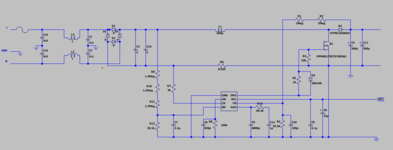caturrn
Newbie
I intend to design an 1500W PFC using ONSEMI's NCP1654 working on 65 kHz, below is the schematic design
The design i intend to is working at EU input with 400V output.

the parts that left for design is the inductor. I trying to design the inductor using example at A-Z SMPS by Maniktala on below

But with the calculation, it result in core size with 103cm^3, When i looked at the ETD datasheet even ETD59 cannot acomplish this core size needs. So i intend to increase the frequency to 200kHz so the size will be dropped. But by doing so, it will result in high switching loss in MOSFET, is it safe to increase the frequency to 200kHz?
and another question, as the example is ETD core, can i convert it into toroid?
thanks
The design i intend to is working at EU input with 400V output.
the parts that left for design is the inductor. I trying to design the inductor using example at A-Z SMPS by Maniktala on below
But with the calculation, it result in core size with 103cm^3, When i looked at the ETD datasheet even ETD59 cannot acomplish this core size needs. So i intend to increase the frequency to 200kHz so the size will be dropped. But by doing so, it will result in high switching loss in MOSFET, is it safe to increase the frequency to 200kHz?
and another question, as the example is ETD core, can i convert it into toroid?
thanks
